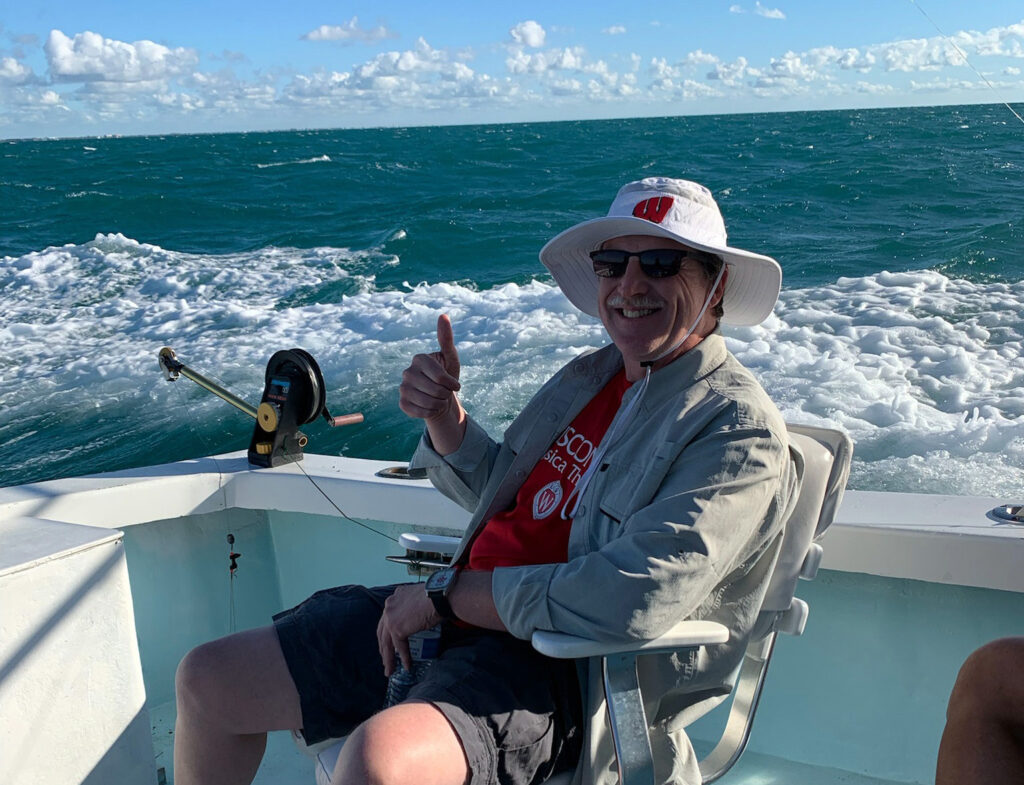Advanced Physical Therapy’s Joe Hanel and Mark Schmitz
It’s been said many times before but bears repeating: employees are the most valuable asset of any company.
To care for that asset, a wide range of companies look to Advanced Physical Therapy & Sports Medicine (APTSM) to deliver physical and occupational therapy services to employees onsite.
The Appleton-based practice is the largest fully independent provider of comprehensive orthopedic, sports and industrial physical and occupational therapy in Northeast and Central Wisconsin.
In this issue’s profile, we let the words of two APTSM onsite providers — Joe Hanel and Mark Schmitz — describe what it is they do.
THE ROLE
Joe: I provide onsite services, basically in the form of first aid and physical therapy. Employees see me right at work when they have an issue without having lost time or having to go to offsite appointments. My job to keep them healthy and on the job.
Mark: My primary role is to get people evaluated and then to address their aches and pains quickly and appropriately. Additionally, if an employee is not responding to early intervention services, I educate and assist them with possible next steps.
THE SPECS
Right: A physical therapist specializing in onsite injury assessment and management services for multiple businesses in the Fox Valley area, Mark Schmitz demands ergonomically appropriate chairs wherever he goes.
Joe: I’ll do about four hours at a time at a location. Yesterday I was at the Appleton location for four hours, then the Greenville location for another four. Other days it’s just one spot for four hours, maybe another for an hour or two, typically across shifts. Whatever they need.
Mark: Every company’s a little different. One company wants you to participate in identifying safety concerns by observing employees in their work environment, and then working with them and company officials to come up with solutions to mitigate risk. Another company may have their own ergonomics and safety people to work on risk management so they want you to focus on injury management.
THE COMPANY
Joe: The company allows their employees to be seen for both work-related and non-work-related injuries. They give their employees the freedom to stop in at any time, whether it’s to get questions answered or for some quick manual therapy. They feel happy and are more focused after they’ve been seen.
Mark: Some companies have nursing or other health services personnel on staff, but few have the musculoskeletal expertise that a physical therapist, occupational therapist, or licensed athletic trainer can provide. This makes us a valuable asset in the management of work injuries, the majority of which are musculoskeletal in nature.
THE TYPICAL PATIENT
Joe: Often it can be lots of upper extremity, but we see the areas of concern, look at our data, do ergonomic investigations. But really there is no typical, as I’ll go from an ankle to a knee, a tweaked hamstring to a smashed hand. We see it all, and I embrace that. And foot problems, for sure.
Mark: The typical patient we see on-site is dependent on the work demands that employees are exposed to. They often present with upper extremity (arm) issues at my companies because of the heavy manual manipulations involved in manufacturing, but I also see plenty of neck, back, and lower extremity (leg) issues as well.
THE INDUSTRIAL ATHLETE
Joe: I always have called them industrial athletes; I use that term a lot, because they are doing a lot of repetitive work, and because of the physicality involved in their jobs. They come and see me onsite and we get them back to work quickly.
Mark: I see workers as industrial athletes because their jobs physically challenge their bodies just like the Alvin Kamaras of the world. Regardless of whether you are a professional football player or a welder, these physical challenges can lead to injury. Both deserve to have appropriate medical care, and I feel like I can help workers with that.
THE SAVINGS
Joe: It’s definitely into the hundreds of thousands here. You’re looking at $40,000-$50,000 per employee if it ends up as a work comp claim. And I save 30 to 40 shoulder injuries a year, so that really adds up.
Mark: Internal metrics on employee injuries, injury management costs, and lost time days show the cost benefits of on-site services.
ON GETTING HERE
Joe: When I first heard about industrial, I started looking into it a bit knowing that as somebody who was married and had one child already and more kids coming soon, I knew being a high school or college trainer probably wasn’t going to be ideal. Advanced PT knew I was interested in industrial and asked me to join their team part time. It wasn’t long before I had plenty of hours and it just grew from there.
Mark: I’ve been doing this for many, many moons. I made the jump into industrial wellness because as a clinic based physical therapist, I was seeing my patients way after they were injured. This was an opportunity to do wellness prevention and earlier intervention so I made the leap. Advanced PT has given me the opportunity to do both, so I’m in clinic a couple of times a week and onsite the rest of the time.
ATHLETIC HISTORY
Joe: I played baseball through college. I played just about everything in high school: football, basketball, baseball, tennis, soccer. Oh, yeah. All kinds of stuff.
Mark: I tried to do athletic stuff when I was young, and I was woefully bad. But just because you’re terrible at it doesn’t mean you don’t have an interest in it. GO BADGERS!



